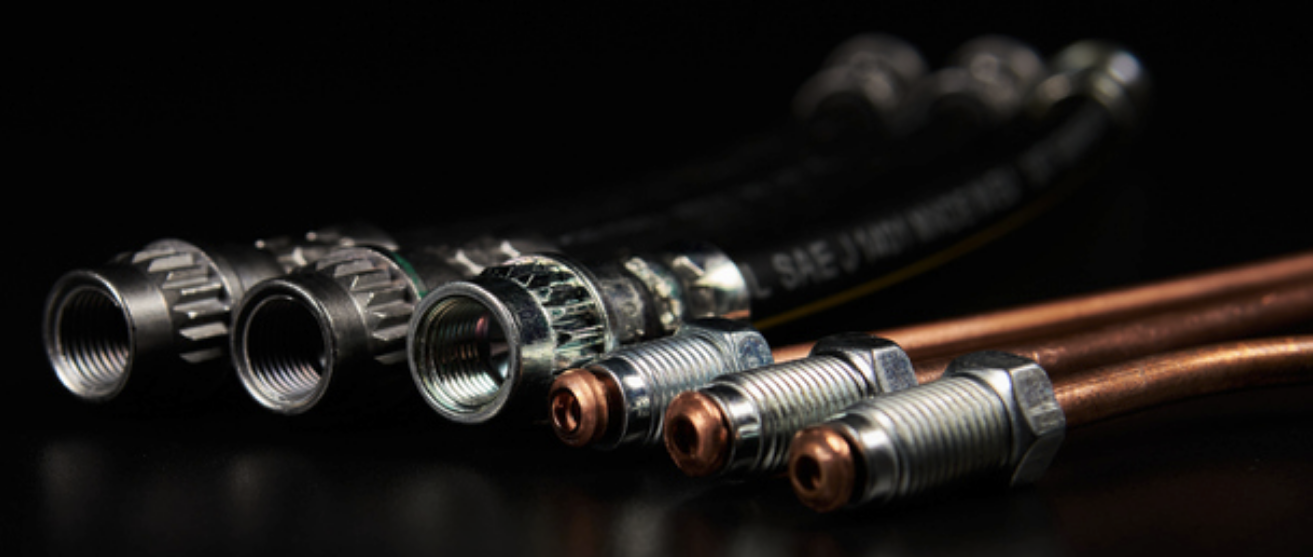2 min read
Understanding Common Hydraulic Hose Fitting Types
Python Covers Team
:
Aug 10, 2022 1:00:00 PM

With hundreds of manufacturers producing hydraulic equipment around the globe, the types, materials, and styles of hydraulic hose fittings differ significantly. But there is one consideration that should remain constant: safety.
To reduce the risk of leaks and bursts, it’s important to ensure you have the correct hydraulic hose fittings for your application. We’ve created this high-level guide to help you identify the most common types of hydraulic hose fittings and make the best safety choice for your business.
Ensuring you have the proper fittings, combined with innovative hydraulic hose covers, is one of the most crucial steps you can take to ensure operator safety.
Breaking Down Common Hydraulic Hose Fitting Types
Since industrial equipment manufacturers exist throughout the world, it’s not surprising that a multitude of different types of fittings and adapters exist. With a wide variety of fittings comes an equally enormous array of different sealing methods and thread forms.
To determine the type you’re actually working with, there’s a simple five-step process involved:

- Figure out whether it’s a permanent or reusable type (permanent fittings are typically crimped)
- Identify the port connections before you attempt to install a hose or tube assembly (the most common are shown below)
- Identify the particular sealing method (automated angle, tapered threads, or an O-ring)
- Determine the seat angle
- Measure the thread
Once you have completed these five steps, your hose shop will be able to use these measurements and specifications to give recommendations on which type, style, and material would be the best hose fitting for your application.
After you’ve selected the ideal fit for your application, it’s time to shop for a tubular sleeve that offers:
- Pin hole protection
- Burst protection
- Abrasion resistance
- Easy installation
Not sure where to begin? We recommend checking out the Diamondback Pro to start.
6 Common Types Of Hydraulic Hose Fittings
Depending on your location, the equipment’s purpose, and the specifications above, your hose vendor should recommend one of the following types of hydraulic hose fittings:
- NPT/NPTF
- BPST (JIS-PT)
- BSPP (JIS-PF)
- SAE Straight Thread
- JIS Tapered
- Din Metric
We’ve broken down the variances in hose fittings below, in case you need to brush up on your acronyms.
1. NPT/NPTF
National Pipe Taper (NPT for short) and National Pipe Tapered for Fuels (NPTF) are the most frequently used fittings in North America. These are recognizable by the tapered inner and outer diameter, making the fitting self-sealing.
2. BSPT (JIS-PT)
British Standard Pipe & British Standard Pipe Tapered, commonly known as the British Thread Type, are comparable to NPT but have different thread pitches. These are standard fittings that have been internationally adopted for sealing pipe ends and making connections.
3. BSPP (JIS-PF)
JIS stands for Japanese Industrial Standards. These BSPP connectors follow the standard British thread dimensions, allowing for interchangeable parts.
4. SAE Straight Thread
Society of Automotive Engineering (SAE) Threaded fittings are both reliable and reusable. Several different types of these fittings exist, including SAE J1926, SA J514, SAE J512, and more. These have excellent sealing because of the 90-durometer O-Rings.
5. JIS TAPERED
Japanese Industrial Standards (JIS) tapered hinges are one of the most popular fittings in Japan. Compatible and interchangeable with BSPT connections, JIS tapered hinges are largely used as hose adapters for equipment designed in Japan or Korea.
6. DIN Metric
DIN is the German Industrial Standard, and these are popular throughout Germany and much of Europe. The male connector has a straight metric thread with a 60 angle on the recessed side, while the female connector has a straight thread and a tapered seat.
Hydraulic Hose Fitting Types | Consult the Experts
Selecting the right type of hydraulic hose fitting is important to ensuring the safety of the equipment, operator, and bystanders. Consulting the experts at your preferred hose shop can prevent catastrophic damage to both the equipment and operators nearby.
For top-of-the-line safety and operational freedom, be sure to integrate the hose fittings recommended by your hose shop.
When replacing or adding additional hydraulic lines, integrate one of Python’s premium sleeves to protect against abrasion, pin-hole leaks, and hose bursts.